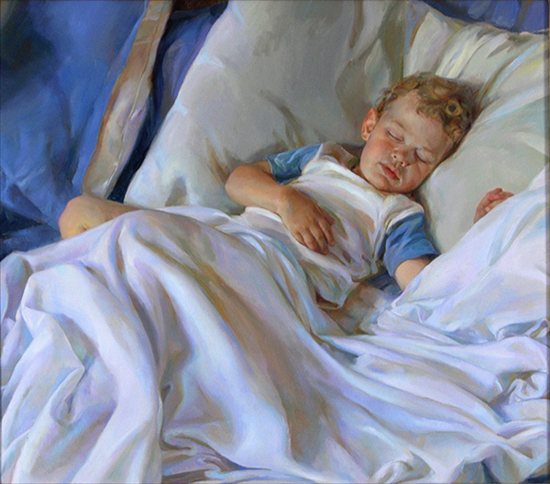All About Drawing and Painting
An Artist Needs Information technology All—From Cartoon Techniques to Drawing Ideas

Mastering the art of drawing tin take a lifetime considering there are just then many drawing lessons to exist learned. From foundational footstep-by-pace drawing knowledge to all the different kinds of drawings to be explored—line drawing, contour drawing, gesture drawing, figure cartoon, and more—a life of drawing is one that tin be busy and incredibly varied.
But there are drawing basics that draftsman most always explore. That'south why taking drawing tutorials on shapes are so prevalent and popular. How to depict a cube, how to draw a sphere, how to draw a cylinder—these are the essential building blocks that allow artists to learn what they need about drawing line, shading, and turning course in guild to create more complicated and virtuosic drawings as their skills progress.
The almost crucial of all drawing tips is elementary—draw! Make it a daily part of your creative practice. Study the celebrated cartoon masters of the past; deport a sketchbook with yous as much equally possible to record your own elementary cartoon sketches; study more than complicated drawing pursuits like anatomy, the sight-size method, and gesture cartoon.
All of these combined will give you a foundation of drawing basics and the keys to grow them into a skill prepare that no successful creative person should be without, assuasive you to draw competently and confidently for the rest of your career.
Get your gratuitous eBook of drawing techniques! Free and sectional to Creative person Daily eNewsletter subscribers. Enter your electronic mail in the box beneath to receive your free eBook plus eNewsletters on drawing tips and more!
[fw-capture-inline campaign="RCLP-confirmation-cartoon-basics" thank you="Thanks for downloading!" involvement="Art" offer="/wp-content/uploads/pdfs/Cartoon-Basics_free-beginner-drawing-techniques.pdf"]
Contour Lines & Line Drawing

Profile lines are useful to indicate the edge of a form in a line drawing. In truth, we don't see a line marking the edge of a model's face. We only run into where the grade curves away from view. Cartoon a solid line on the edge of elements suggests shapes, not forms—a draftsman must have care to imply the other planes not visible from the viewer'southward vantage point. Plus, just concentrating on the contour lines can distract an creative person from the important task of portraying the gesture of the model, which ordinarily radiates from the interior of a figure. For this and for other applied reasons, an artist'southward handling of edges is of nifty importance if a cartoon is to exist convincing.
Curves are hard to accurately render. Many drawing instructors recommend using only straight lines for edges, softening them into curves where necessary afterwards. If you think this is a beginner'south crutch, consider how Rubens, a primary draftsman, used this method.
Edges do much of the work in suggesting depth. A thick line brings the shape forrard; Dan Gheno'due south drawing reminds us that a light, thin line indicates a plane receding into the background. Simply edges aren't just about lines. In more than tonal pieces, a harder edge and a marked contrast betwixt planes create a course that is closer to the viewer than i with a softer, lighter look. This is essential for cast shadows—a shadow is sharpest at the point where it touches the object casting it, and it diffuses equally the shadow lengthens away from the object.
Cartoon the Cube—Drawing the Figure

In the nigh nuts of cartoon, the human being body tin can exist reduced to basic geometric volumes. The head, ribcage, and pelvis are the three principal masses of the torso, and they are continued by the vertebral cavalcade, which tin independently tip, turn, and tilt. The front, side, and back views of the figure, built every bit cubes, illustrate the multifariousness of these movements. Each mass is in a different position in space. Notation the imaginary center marked on each mass, describing the orientation. Many artists observe information technology helpful to employ the cube to sympathise and re-create complex forms in nature, as shown in some of Luca Cambiaso'south drawings.
Get your complimentary eBook of drawing techniques! Complimentary and exclusive to Artist Daily eNewsletter subscribers. Enter your email in the box beneath to receive your costless eBook plus eNewsletters on drawing tips and more!
[fw-capture-inline campaign="RCLP-confirmation-drawing-basics" thanks="Cheers for downloading!" involvement="Art" offer="/wp-content/uploads/pdfs/Drawing-Basics_free-beginner-drawing-techniques.pdf"]
When imagining the head, ribcage, or pelvis every bit boxes, we observe that they are rarely seen at predictable views but are continuously changing in their positions in space. Analogy i shows a series of rectangular cubes presented as a head thrown into different perspectives. In the center row and middle rows the cube is tipped and turned and all of their respective positions appear to be vanishing to a true horizon—that is, all lines are vanishing to the middle level of the viewer. The exterior rows show the cube tipped, turned, and tilted, which means all lines are vanishing to a false horizon—they are no longer vanishing to the centre level. This is almost oftentimes the example when drawing the head. Note the axis of the head that orients its position in space. The axis is an imaginary rod running through the eye center of the mass.
Good drawing requires developing the ability to describe anything and then that it appears structurally right and undistorted. By far the all-time method for learning to draw is to draw bodily objects from life—not copying reproductions or photographs. Mastery comes through constant practicing of drawing techniques and skill. Proceed nurturing your creativity while working on the more than formal exercises. In the long view they will help one another.
–Jon deMartin
Making Fine art According to Leonardo da Vinci'southward Motto
Left: Kem, item, 2004, 48 x 24, oil on canvas. Right: Hands #i, 2011, 24 x 24, oil on canvas.
I am not challenge either painting is meliorate, but without my figure drawing
practice between 2004 and 2011 I couldn't accept painted the newer painting.
Few match, and I'd argue that none surpass, the genius of Da Vinci. But Da Vinci himself may not accept seen it that way. It is said that his motto was Ostinato Rigore. This translates to something like "persistent rigor." Da Vinci tirelessly pursued his art, from moving line drawings to designs for incredible inventions, and immune no obstacle or claiming to deter him.
Yes, in that location is such a thing as talent. There are prodigies out there in the world. Only the pencil and the brush hibernate continents of complexity. A prodigy may option up either i and make a great painting or draft a beautiful drawing the first time he or she tries. Just to make a life of it—to produce a great trunk of work, possibly to change the world as Da Vinci did—takes persistent rigor.
Beauty and truth are fine things, and they live on a high mount. Sometimes, in the dreams of talent and prodigy, we fly upwardly and impact them. But it is only by climbing a petty flake every day that we can promise to make a home with them, and share their company for an extended fourth dimension. Some people are born with talent, but nobody is built-in with skill. Skill is the mastery of materials and techniques, learning the nuts of your art form, and there is no way to get to that level of expertise except by practicing, by showing persistent rigor.
–Daniel Maidman
pritchardmakentance.blogspot.com
Source: https://www.artistsnetwork.com/art-mediums/drawing/drawing-basics/
0 Response to "All About Drawing and Painting"
Post a Comment